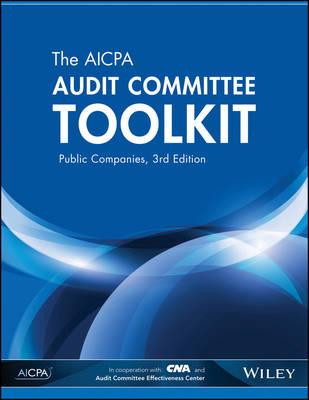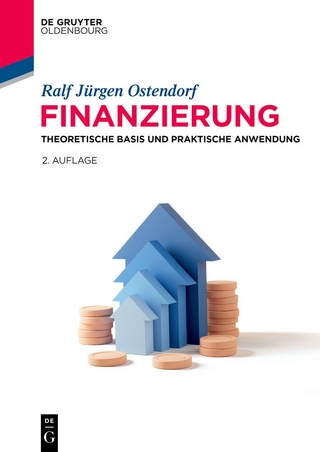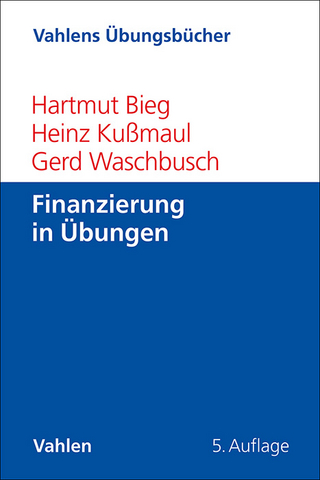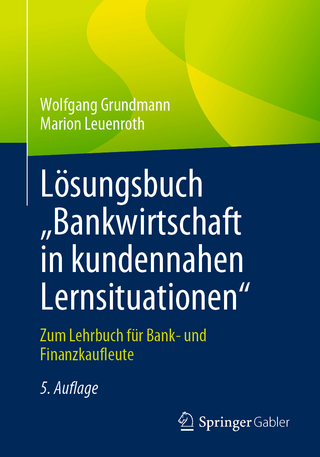
The AICPA Audit Committee Toolkit
American Institute of Certified Public Accountants (Verlag)
978-1-940235-44-8 (ISBN)
- Titel ist leider vergriffen;
keine Neuauflage - Artikel merken
Founded in 1887, the American Institute of Certified Public Accountants (AICPA) represents the CPA and accounting profession nationally and globally regarding rule-making and standard-setting, and serves as an advocate before legislative bodies, public interest groups and other professional organizations. The AICPA develops standards for audits of private companies and other services by CPAs; provides educational guidance materials to its members; develops and grades the Uniform CPA Examination; and monitors and enforces compliance with the accounting profession s technical and ethical standards. The AICPA s founding established accountancy as a profession distinguished by rigorous educational requirements, high professional standards, a strict code of professional ethics, a licensing status and a commitment to serving the public interest.
Acknowledgements iii Preface v Part I: Audit Committee Administration Chapter 1 Audit Committee Member Roles and Responsibilities 3 Audit Committee Process and Procedures 4 Oversight of the Financial Reporting Process 4 Oversight of Financial Reporting 5 Oversight of the Independent Auditor 5 Oversight of the Internal Audit Function 5 Oversight of Risk Management 6 Oversight of Ethics and Compliance 6 Limitation of Audit Committee s Role 6 Chapter 2 Audit Committee Charter Matrix 7 Chapter 3 Audit Committee Financial Expert Decision Tree 23 Chapter 4 Sample Request for Proposal Letter for CPA Services and Qualifications (Public Company) 25 Background of ABC Company 25 Services to Be Performed 26 Key Personnel 26 Relationship With Prior CPA Service Provider 26 Other Information 27 Your Response to This Request for Proposal 27 Evaluation of Proposals 29 Chapter 5 AICPA Peer Reviews and PCAOB Inspections of CPA Firms: An Overview 31 Peer Review of a CPA Firm 31 Peer Review Reports 32 Common Misconceptions of Peer Review 33 Questions for the Auditor Regarding Peer Review 33 Public Company Accounting Oversight Board Inspection 34 Questions for the Audit Committee Regarding the PCAOB Inspection 35 Chapter 6 Guidelines for Hiring the Chief Audit Executive (CAE) 37 Role of the Audit Committee in Hiring and Evaluating the CAE 37 CAE Qualifications 37 Chapter 7 Engaging Independent Counsel and Other Advisers 43 Part II: Key Responsibilities Chapter 8 Internal Control: Guidelines and Tool for the Audit Committee 47 Internal Control Primer 47 Internal Control Over Financial Reporting 52 ICFR Results 55 Conclusion 56 Internal Control Checklist of COSO Essentials for the Board 57 Chapter 9 Fraud and the Responsibilities of the Audit Committee: An Overview 63 Definition and Categories of Fraud 63 Roles of the Audit Committee in the Prevention, Deterrence, Investigation, and Discovery or Detection of Fraud 64 Expertise of Forensic Accounting Consultants 65 When Fraud Is Discovered 65 Conclusion 66 Chapter 10 Whistleblower Policy: Complaint Reporting Procedures and Tracking Report 67 Reasons for Tool 67 Whistleblower Common Practices Checklist 68 Sample Procedures For Handling Complaints (Whistleblower Policy) 71 Chapter 11 Issues Report from Management 75 Defining Significant Issues, Critical Accounting Estimates, Significant Unusual Transactions, and Judgments 75 Sample Issues Report From Management 77 Issues Report From Management 79 Chapter 12 Guidelines and Questions for Conducting an Audit Committee Executive Session 81 What Is an Executive Session? 81 Additional Questions to Consider: Tool for Audit Committee Members 83 Chapter 13 Independent Auditor Communications with Audit Committee 97 Background 97 Objectives of Communications 97 Illegal Acts 103 Internal Control Matters 103 Fraud 103 Chapter 14 Responding to the Identification of a Material Weakness A Checklist for the Audit Committee 105 Background 105 Steps the Audit Committee Should Take If Faced With an Adverse Report on Internal Control 107 Part III: Performance Evaluation Chapter 15 Evaluating the Internal Audit Function: Questions to Consider 113 Chapter 16 Evaluating the Independent Auditor: Questions to Consider 117 Questions for Audit Committee Members 117 Questions for Management and/or Internal Audit 120 Chapter 17 Conducting an Audit Committee Self-Evaluation: Questions to Consider 121 Part IV: Other Tools Chapter 18 Enterprise Risk Management: A Primer on the COSO Framework 127 Enterprise Risk Management Primer Basics of ERM and Its Relationship to Internal Control 127 Relationship Between COSO Enterprise Risk Management Integrated Framework and Internal Control Integrated Framework 129 Other Key Terms in Enterprise Risk Management 131 Portfolio View of Residual Risk Example 132 Roles and Responsibilities 132 Limitations of Enterprise Risk Management 133 Conclusion 133 Enterprise Risk Management: A Tool for Strategic Oversight 134 Chapter 19 Enterprise Risk Management: A Tool for Strategic Oversight 135 Chapter 20 Common Security and Exchange Commission (SEC) Filings: An Overview 139 Overview of the Most Common Corporate Filings 139 1933 Act Registration Statements 142 Investment Company Registration Statements 145 1934 Act Registration Statements 146 Other Exchange Act Forms 147 Trust Indenture Act of 1939 Forms 150 Chapter 21 SEC Final Rule on Audit Committee Financial Experts 151 Chapter 22 IFRS Implementation 161 Implementation 161 Stage 1: Assessment 161 Stage 2: Conversion 162 Stage 3: Integration 163 Conclusion 164 Chapter 23 Resources for Audit Committees 165
| Erscheinungsdatum | 29.12.2016 |
|---|---|
| Verlagsort | NC |
| Sprache | englisch |
| Maße | 215 x 280 mm |
| Gewicht | 484 g |
| Themenwelt | Wirtschaft ► Betriebswirtschaft / Management ► Finanzierung |
| Wirtschaft ► Betriebswirtschaft / Management ► Rechnungswesen / Bilanzen | |
| ISBN-10 | 1-940235-44-8 / 1940235448 |
| ISBN-13 | 978-1-940235-44-8 / 9781940235448 |
| Zustand | Neuware |
| Haben Sie eine Frage zum Produkt? |
aus dem Bereich


